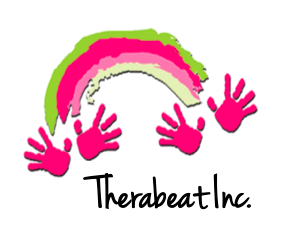Speech and Language therapists focus on communication disorders in individuals who struggle in areas such as improving coordination and strength in speech muscles, improving fluency of speech, articulation of speech, auditory processing, methods of eating, and a plethora of other speech related goals. While speech therapists have been trained to assess and create treatment plans for these specific goals, other therapies have been beneficial towards addressing these goals as well. A research study by Geist, McCarthy, et al., discusses the benefits of MT and ST services practiced together in a co-treatment model. Music therapists are trained to use the therapeutic functions of music such as tempo, rhythm, key, texture, etcetera, to assist with communication skills in individuals with those particular needs. For example, using methods such as OMREX (oral, motor, and respiratory exercises) can be beneficial for the promotion of deep breathing, muscle control, and vocal suspension. Music can also assist with articulation by using songs with specific and repeated words, phrases, or sounds.
In Geist’s (et al.) study, she created the requirements of one client who needed to be between the ages of two and twelve, had a communication impairment, and had parental consent to participate in the study. The client selected was four years of age and had participated in speech therapy services prior to the experiment. The speech therapist had been working on transitioning from bottle feeding, as well as expressing wants and needs. The client’s biggest need, which was assessed by both therapist’s after an initial assessment, was the need to communicate with other children and participate in the classroom. Before co-treatment with music therapy and speech therapy, the client had the comprehension and expression of a 9-to-12 month old child according to the Rossetti Infant Toddler Scale.
The two therapists selected specific co-treatment interventions to address the client’s needs. For example, working on greetings through songs, using a voice output device to select instruments that he wanted to play, or using sound cues to work on sign language. After treatment, ten teachers watched a video of the client's pretreatment and post-treatment. Each agreed that the client had better class participation after treatment concluded.
While speech and music therapy have different domains, they can be beneficial when used together to create faster and more long-term results in areas such as pitch, timbre, rhythm, duration, etcetera. By combining and adapting two types of therapy together, there is a better chance of improving client’s quality of life in an efficient and productive manner.
- Mallory McDonald, Music Therapy Intern
Resources
Geist, McCarthy, et al., (2008) Integrating music therapy services and speech-language therapy services for children with severe communication impairments: A co-treatment model. Journal of Instructional Psychology. 35(4), 311-316.
Tam, L. (2018, April 11). Music Therapy & Co-treatment: What does it look like?. Music Therapy Connections. https://musictherapyconnections.org/2018/04/music-therapy-co-treatment/
Speech-language therapy and music therapy collaboration: The DOS, the ... (n.d.). https://leader.pubs.asha.org/do/10.1044/speech-language-therapy-and-music-therapy-collaboration-the-dos-the-donts-and-the-why-nots/full/








